Household Items You Should Finally Get Rid Of
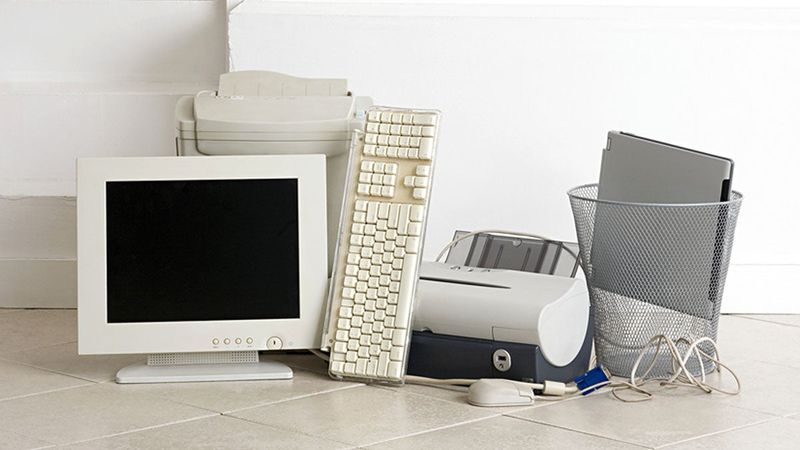
Our homes often become collecting grounds for things we no longer need but can’t seem to part with. These forgotten items take up valuable space, gather dust, and create unnecessary clutter in our living areas. Taking time to identify and remove these unused possessions can transform your home into a more peaceful, organized space. Ready to simplify your surroundings? Here are 17 household items you should finally say goodbye to.
1. Expired Pantry Goods
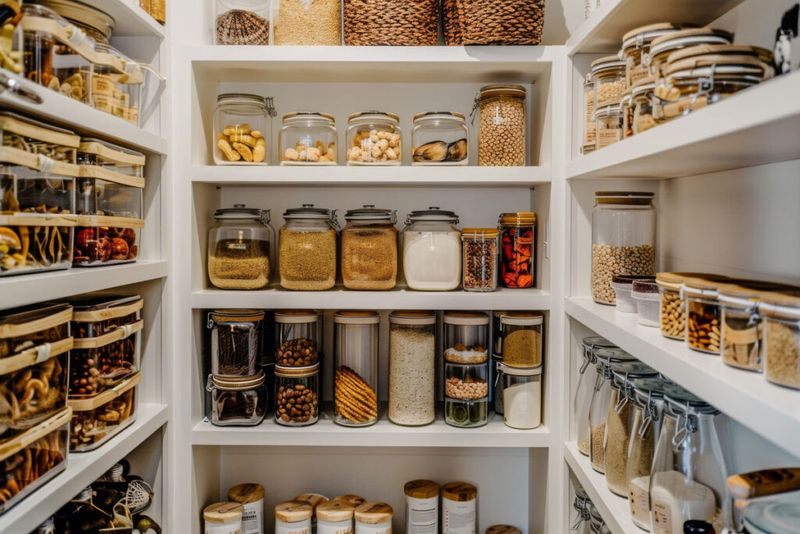
That ancient spice collection isn’t adding flavor to anything except your cabinet’s dust collection. Most dried herbs and spices lose their potency after 1-3 years, turning your culinary creations from flavorful to flat.
Canned goods lurking in the back corners might seem non-perishable, but they deteriorate over time. The quality diminishes long before they become unsafe, leaving you with subpar ingredients.
Do a monthly sweep of your pantry, checking dates and tossing anything past prime. For items still good but unlikely to be used, consider donating to food banks that accept non-perishable goods before their expiration.
2. Single Socks With No Match
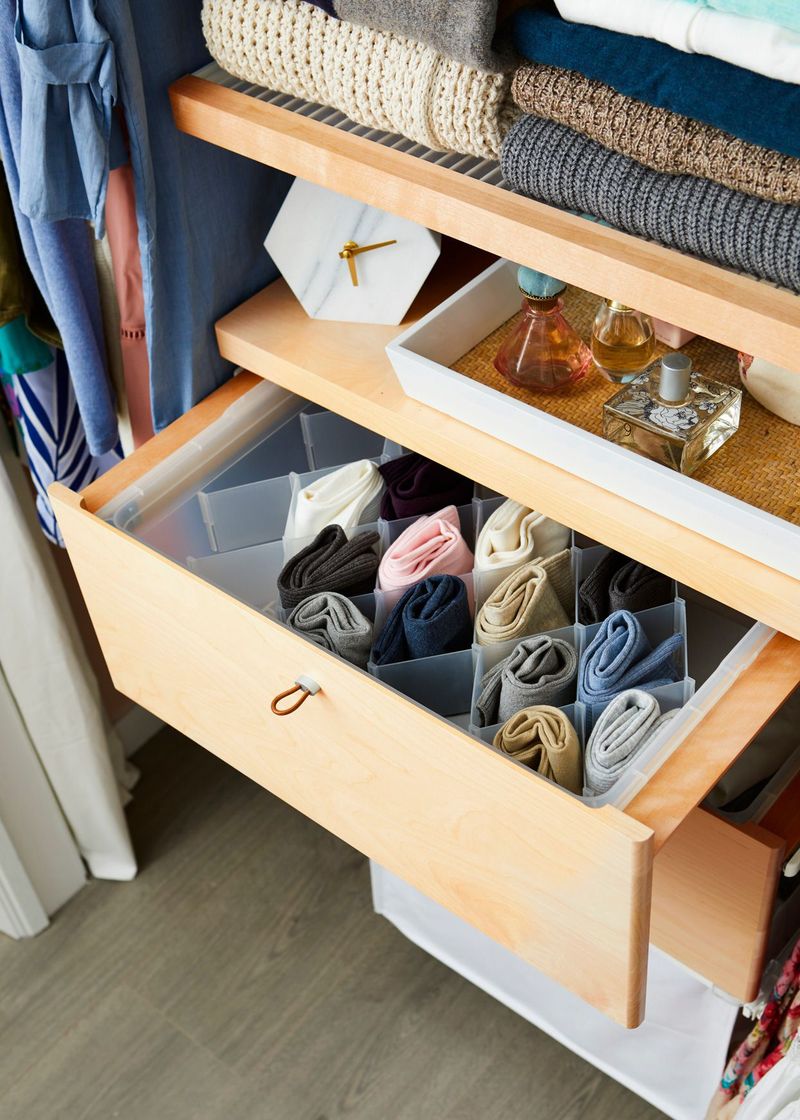
Everyone has that infamous sock drawer section—the lonely singles club where solo socks wait eternally for their missing partners. After months of separation, chances are those matches aren’t hiding under furniture or between sheets—they’re truly gone.
Rather than preserving this sock graveyard, repurpose these orphaned items. Single socks make excellent dust cloths, can protect delicate items during moving, or become handy craft projects.
For the environmentally conscious, textile recycling programs accept odd socks. Some animal shelters even use clean sock donations as bedding material for small creatures. Your drawer space deserves better than becoming a memorial to missing footwear!
3. Old Magazines & Newspapers
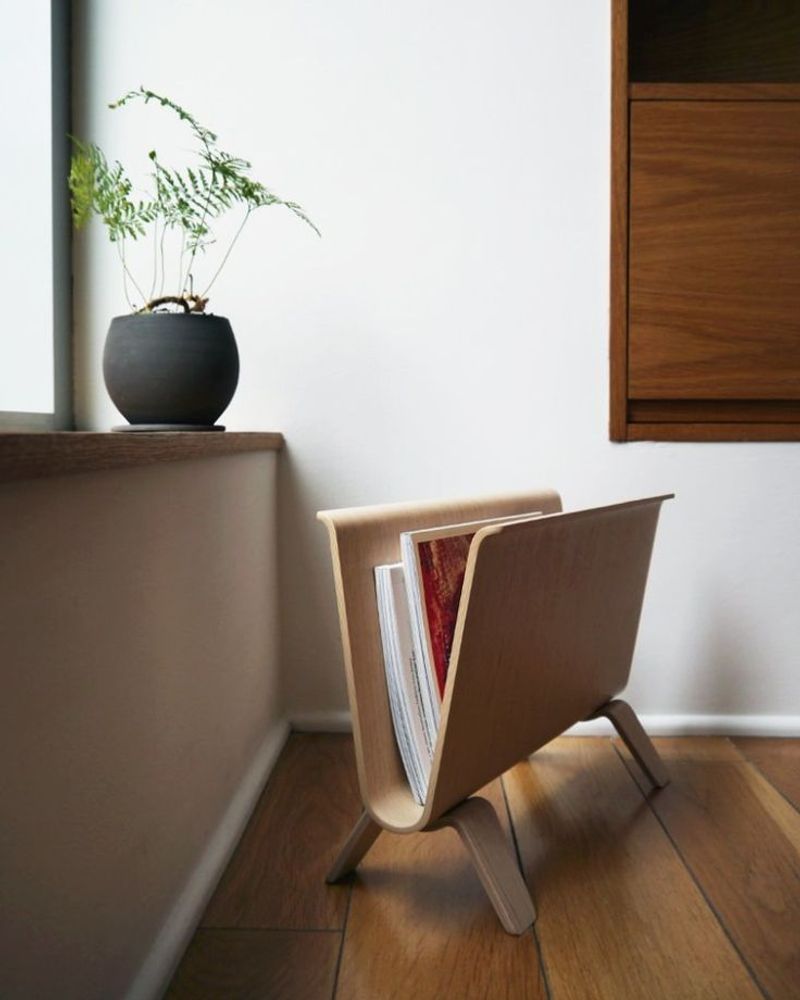
Those stacks of glossy magazines and yellowing newspapers aren’t vintage collectibles—they’re paper mountains stealing your living space. Despite good intentions to revisit interesting articles, most people never actually reread old publications.
The information inside quickly becomes outdated, especially for news-based or technology publications. Meanwhile, these paper products attract dust, provide hiding spots for insects, and create fire hazards.
Cut articles you genuinely want to save, then recycle the rest. Most libraries and schools no longer accept magazine donations due to digital alternatives. For truly valuable vintage publications, consider selling to collectors or scanning important pages before letting the physical copies go.
4. Worn-Out Towels & Washcloths
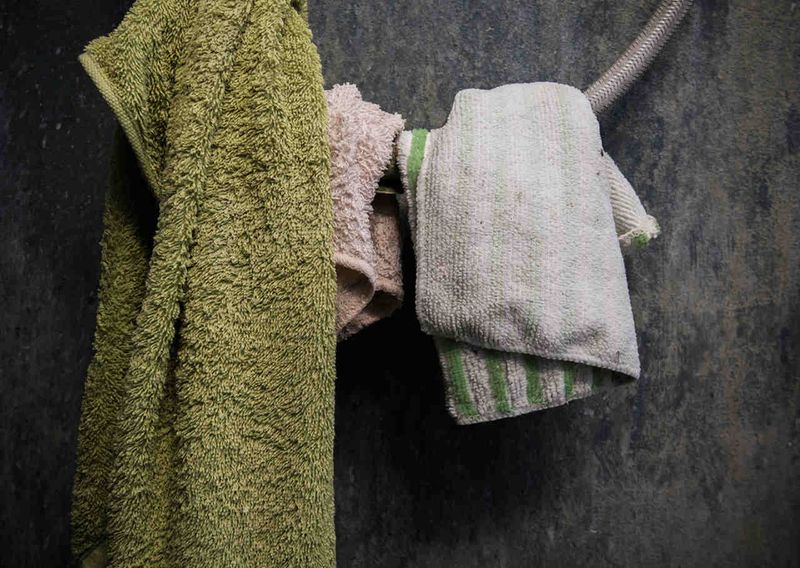
Faded, threadbare towels with fraying edges aren’t just eyesores—they’ve lost their absorbency and softness. No amount of fabric softener revives towels that have served beyond their natural lifespan of about 2-3 years of regular use.
Instead of relegating these tired textiles to the trash, give them purpose in their retirement. Animal shelters desperately need old towels for bedding and cleaning. Car enthusiasts value them for detailing projects where absorbency matters more than appearance.
For crafty types, old towels transform into cleaning rags, reusable “paper” towels, or even bathroom mats with some simple sewing. Your linen closet deserves fresh, fluffy replacements while your old faithfuls find new homes doing dirty work elsewhere.
5. Expired Makeup & Skincare Products

That eyeshadow palette you’ve had since college isn’t a treasured keepsake—it’s a petri dish. Makeup products harbor bacteria over time, especially items used near sensitive areas like eyes and lips. Mascara should be replaced every three months, while powders might last two years with proper care.
Old skincare formulations break down, becoming less effective or even harmful. The preservatives eventually fail, allowing microorganisms to flourish. That fancy face cream might now be causing more problems than it solves.
Check for PAO (Period After Opening) symbols—those little jars with numbers indicating months of safe use after opening. When in doubt, toss it out! Your skin deserves better than expired products that could trigger irritation, breakouts, or infections.
6. Plastic Containers Without Lids
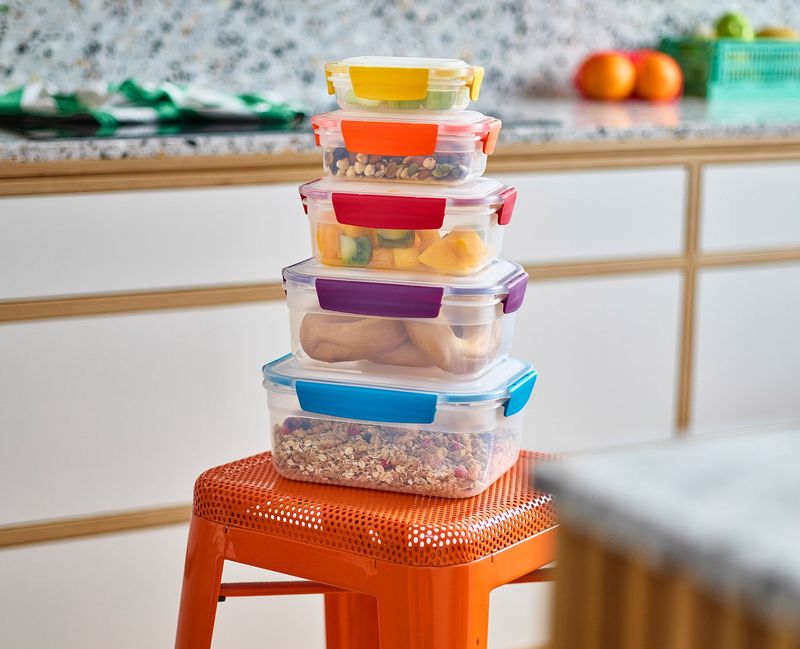
The mysterious case of vanishing container lids plagues kitchens worldwide. Somehow, these plastic partnerships dissolve, leaving mismatched orphans cluttering cabinets everywhere. The lidless container serves no practical food storage purpose—it’s just taking up valuable kitchen real estate.
Mismatched food storage creates daily frustration when you’re rushing to pack lunches or store leftovers. The time wasted searching for matching components adds unnecessary stress to meal prep routines.
Consider investing in a single, quality storage system with standardized lids rather than collecting random takeout containers. For the orphaned pieces, repurpose them as drawer organizers, plant saucers, or paint trays for craft projects. Your kitchen deserves storage solutions that actually solve problems rather than create them.
7. Unused Electronics Cables & Chargers
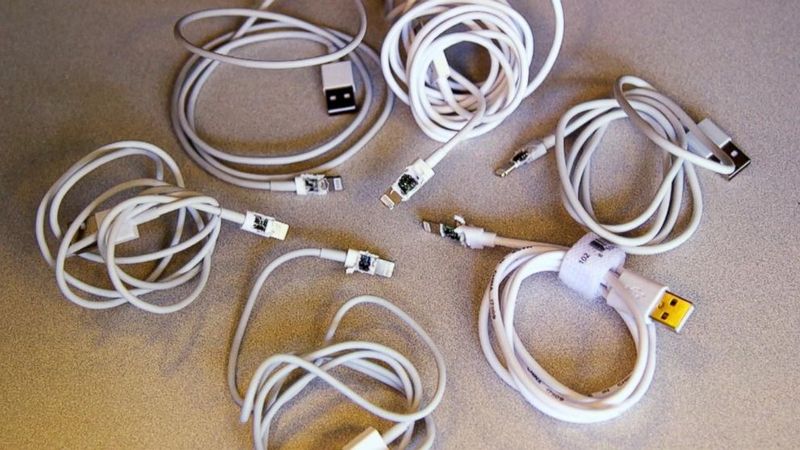
That tangled nest of mystery cables isn’t a tech emergency kit—it’s a dusty monument to obsolete devices. Most households accumulate chargers and cords from phones, cameras, and gadgets long since upgraded or discarded.
USB standards change, proprietary connectors become obsolete, and suddenly you’re hoarding cables for devices you no longer own. These electronic spaghetti piles create unnecessary visual clutter while making it harder to find the cables you actually need.
Sort through your collection, keeping only cables for current devices plus one backup for essentials. For the rest, check with local e-waste recycling programs—many components contain valuable materials that can be recovered. Some electronics stores even offer recycling credit for turning in old accessories.
8. Broken or Unused Kitchen Gadgets
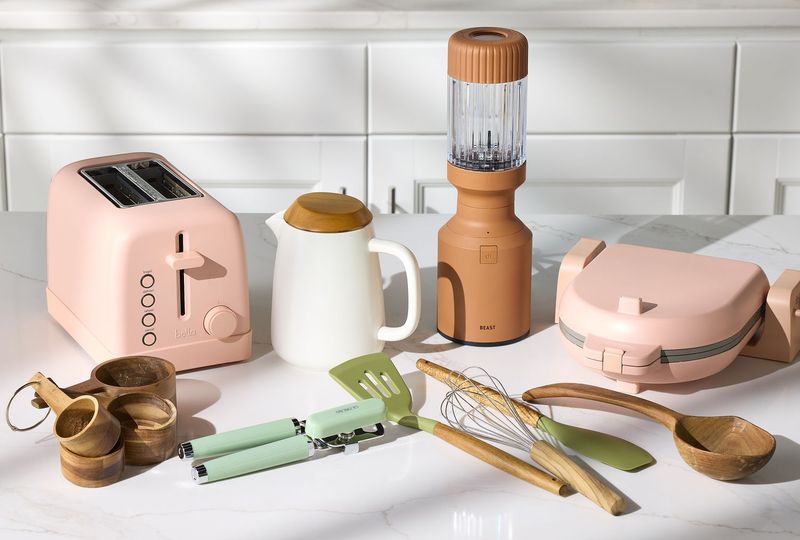
Remember that bread maker you used exactly twice? Or the fancy spiralizer still in its original packaging? Kitchen gadget graveyards consume valuable cabinet space while contributing nothing to your actual cooking routine.
Many specialized tools promised culinary revolution but delivered only disappointment and dust collection. The juicer requiring complex assembly and cleaning, the egg separator you could replace with your fingers, the avocado slicer that’s less efficient than a knife—all taking up space better used for tools you genuinely enjoy.
Be ruthlessly honest about which gadgets earn their keep. If you haven’t used something in a year, it doesn’t deserve prime kitchen real estate. Donate working items to thrift stores where cooking enthusiasts can discover them at bargain prices.
9. Old or Duplicate Kitchen Utensils
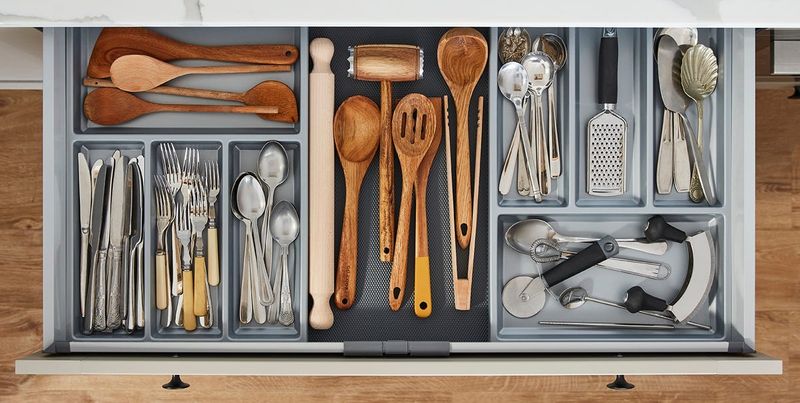
Six nearly identical spatulas crowd your utensil drawer, making it impossible to close properly. How did this happen? Kitchen tool multiplication occurs gradually—wedding gifts, impulse purchases, and that set you bought forgetting you already owned the essentials.
Cooking becomes frustrating when you must dig through multiple versions of the same tool to find what you need. Those bargain utensils with melting plastic handles or warped edges aren’t serving you well anyway.
Keep only your favorite version of each essential tool. Quality matters more than quantity here—one excellent spatula outperforms five mediocre ones. For specialized tools used rarely (like that gravy separator), consider whether borrowing or improvising would work better than permanent storage. Your cooking experience improves dramatically with a curated collection rather than a jumbled assortment.
10. Clothes That Don’t Fit or You Haven’t Worn in a Year

“Someday clothes” are holding both your closet and your self-image hostage. Those too-small jeans aren’t motivation—they’re just making your current wardrobe feel cramped and inadequate. Fashion experts agree: if you haven’t worn something in 12 months, you’re unlikely to choose it tomorrow.
Clothing maintained “just in case” rarely serves its intended purpose. Meanwhile, these unworn items prevent you from seeing and appreciating what actually fits and flatters you today. Your closet should contain options that make you feel confident now, not pieces waiting for future circumstances.
Local shelters, career closets, and thrift organizations can give your neglected garments new life with someone who needs them immediately. Your reward? A streamlined wardrobe where everything fits, plus the joy of knowing your donations directly help others.
11. Old Sheets, Pillowcases, and Bedding

Those yellowed sheet sets stuffed in the back of your linen closet aren’t “guest emergency backups”—they’re just taking up space. Bedding deteriorates over time, with fabric thinning, elastic failing, and colors fading regardless of how carefully you’ve stored them.
Many households keep excessive bedding for each bed, far beyond practical rotation needs. This creates unnecessary bulk in storage areas while providing no real benefit. Pillowcases with permanent stains or fitted sheets with stretched-out corners won’t suddenly become more appealing with time.
Animal shelters welcome old bedding donations for comfort and warmth. Textile recycling programs can transform worn-out sheets into industrial wiping cloths or insulation materials. Your linen closet deserves breathing room, with just enough quality bedding for regular use plus one backup set per bed.
12. Outdated Electronics
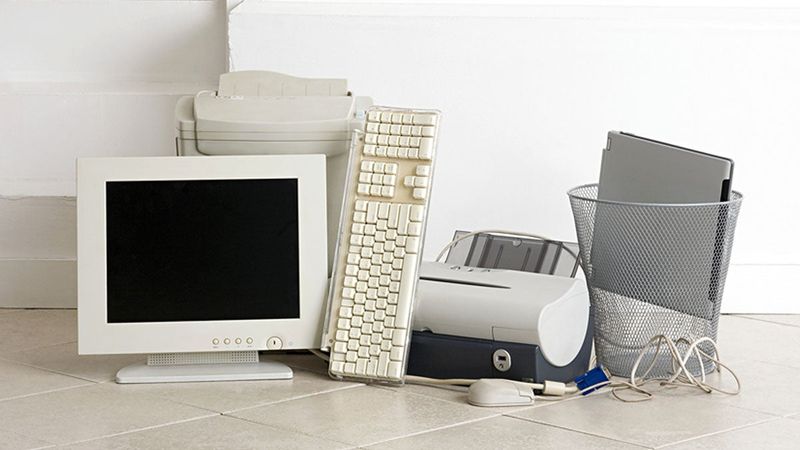
That drawer full of flip phones, MP3 players, and digital cameras from 2005 isn’t a technology museum—it’s electronic clutter collecting dust. Rapid innovation means devices become functionally obsolete long before they physically break down.
Many people keep outdated gadgets from misplaced nostalgia or vague intentions to extract photos or contacts “someday.” Meanwhile, these items contain valuable materials like copper, silver, and rare earth elements that could be recycled into new products.
Before disposing of old electronics, transfer any important data, then properly wipe personal information. Many retailers offer trade-in programs providing store credit for old devices, while certified e-waste recyclers ensure hazardous components don’t end up in landfills. Your home deserves technology that serves your current needs, not electronic fossils from decades past.
13. Excess Water Bottles, Coffee Mugs, or Travel Cups
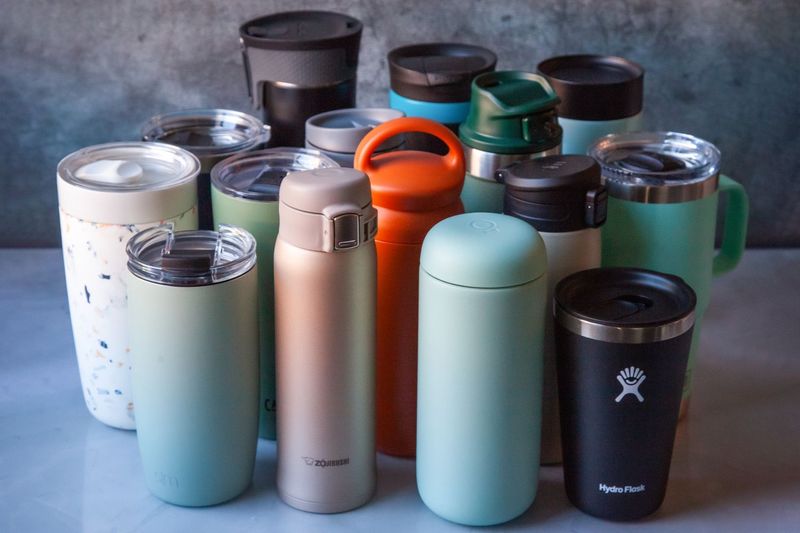
Promotional giveaways, souvenir purchases, and forgotten gifts have filled your cabinets with drinking vessels you rarely use. The average American home contains dozens of mugs and water bottles while typically using just a few favorites regularly.
These excess items create daily frustration as they tumble from overstuffed cabinets or prevent doors from closing properly. The promotional mug from your insurance company’s 2017 customer appreciation day isn’t a treasured keepsake—it’s just creating unnecessary clutter.
Keep only your favorite vessels that serve specific purposes—perhaps one insulated bottle for cold drinks, one for hot beverages, and a few special mugs you genuinely enjoy. Schools, community centers, and offices often welcome donations of clean, functional drinkware. Your morning routine becomes more pleasant when you’re not fighting through a jumble of unused cups.
14. Instruction Manuals for Items You No Longer Own
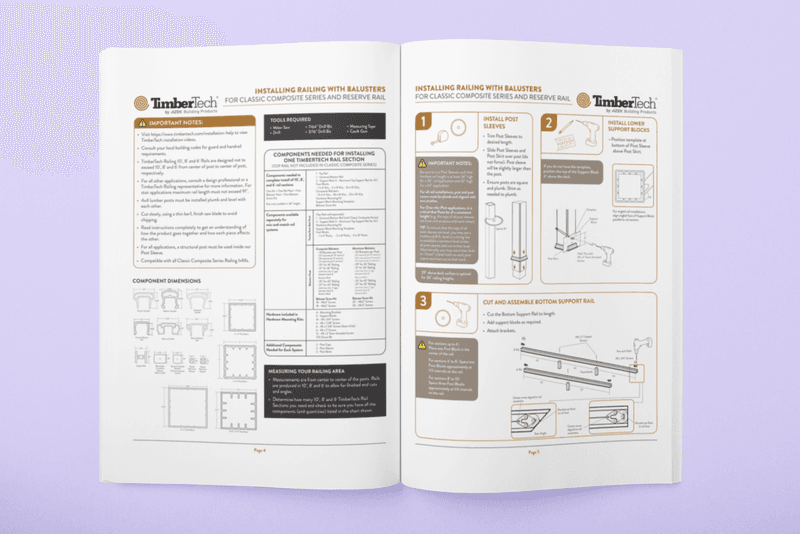
That dusty folder of instruction booklets isn’t a practical reference library—it’s paper clutter for appliances you may not even own anymore. Manufacturers now provide digital manuals online, making physical copies largely unnecessary for current products.
Many households maintain collections of manuals for items long since replaced, donated, or discarded. These paper booklets consume space while providing no practical value. The washing machine manual from three models ago won’t help with your current laundry challenges.
For items you still own, search the manufacturer’s website for PDF versions you can save digitally. This creates searchable references without physical storage requirements. For manuals to products you still use but can’t find online, consider scanning important pages before recycling the originals. Your filing system will thank you for the reduced paper volume.
15. Empty or Half-Burned Candles
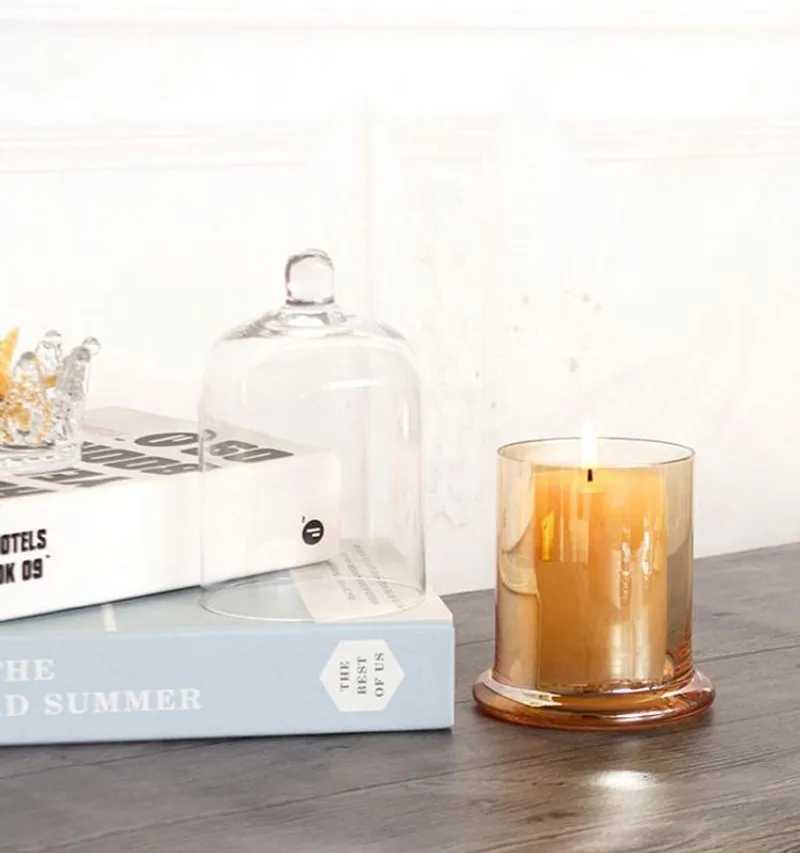
Candle collectors often struggle with letting go of beautiful containers even after the wax is gone. Those decorative jars with half-inch wax remnants aren’t providing ambiance—they’re just gathering dust on shelves and windowsills.
Half-burned candles with tunneled centers won’t burn properly anyway, creating fire hazards when wicks disappear into melted caverns. Meanwhile, the fragrance oils evaporate over time, leaving even unburned candles less potent than when purchased.
For nearly-empty favorites, try the freezer method—cold temperatures shrink remaining wax for easy removal, letting you repurpose beautiful containers as makeup brush holders or small planters. Alternatively, a hairdryer melts remnants for combination into new candles. Truly expired or unpleasant scents should simply be discarded, freeing both physical space and mental energy for fresh alternatives you’ll actually enjoy.
16. Old Greeting Cards & Paper Clutter

Birthday wishes from 2012 aren’t precious keepsakes—they’re paper taking up space in boxes and drawers throughout your home. While genuinely meaningful cards deserve preservation, most routine greetings lose significance quickly after the occasion passes.
Many people feel obligated to keep every card received, creating overwhelming paper collections that become burdensome rather than joyful. This sentimental clutter accumulates in forgotten corners, neither displayed nor truly appreciated.
Consider creating a small memory box for truly special messages while photographing and recycling the rest. For crafty types, old cards transform into gift tags, bookmarks, or collage materials. Digital scanning preserves memories without physical storage requirements. Remember: preserving everything means nothing stands out as special—curating only meaningful items creates a collection you’ll actually revisit rather than a burden you’ll eventually pass to someone else.
17. Shoes That Hurt or Are Beyond Repair

Those gorgeous heels that pinch your toes aren’t waiting for the right occasion—they’re just taking up valuable closet space. Painful footwear remains painful regardless of how much you paid or how stylish they appear. Your feet deserve better treatment!
Shoes with structural damage like separated soles, cracked leather, or worn-through support can’t be reliably repaired and may actually cause injury. Meanwhile, maintaining these unwearable pairs creates visual clutter that makes finding your functional footwear more difficult each morning.
Quality shoes in good condition can find new homes through donation centers or consignment shops. For truly damaged pairs, some athletic shoe companies offer recycling programs that transform old sneakers into playground surfaces. Your shoe collection should contain only comfortable, functional options that actually support your lifestyle.

Comments
Loading…